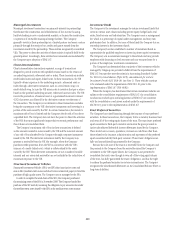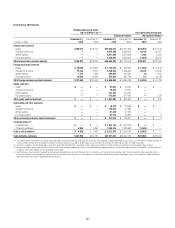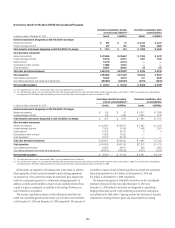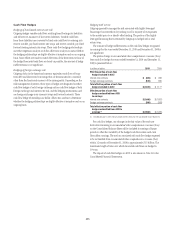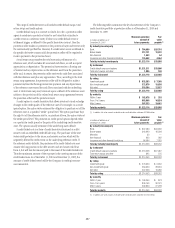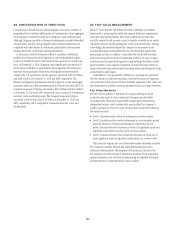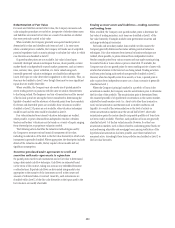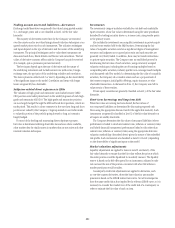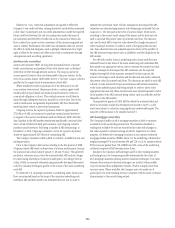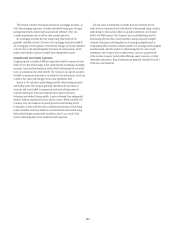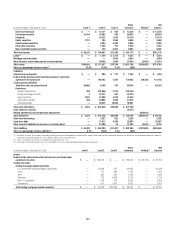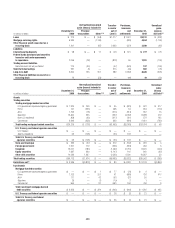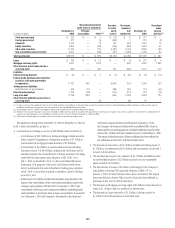Citibank 2010 Annual Report Download - page 261
Download and view the complete annual report
Please find page 261 of the 2010 Citibank annual report below. You can navigate through the pages in the report by either clicking on the pages listed below, or by using the keyword search tool below to find specific information within the annual report.259
25. FAIR VALUE MEASUREMENT
SFAS 157 (now ASC 820-10) defines fair value, establishes a consistent
framework for measuring fair value and expands disclosure requirements
about fair value measurements. Fair value is defined as the price that
would be received to sell an asset or paid to transfer a liability in an orderly
transaction between market participants at the measurement date. Among
other things, the standard requires the Company to maximize the use
of observable inputs and minimize the use of unobservable inputs when
measuring fair value. In addition, it precludes the use of block discounts
when measuring the fair value of instruments traded in an active market;
such discounts were previously applied to large holdings of publicly traded
equity securities. It also requires recognition of trade-date gains related to
certain derivative transactions whose fair values have been determined using
unobservable market inputs.
Under SFAS 157, the probability of default of a counterparty is factored
into the valuation of derivative positions, includes the impact of Citigroup’s
own credit risk on derivatives and other liabilities measured at fair value, and
also eliminates the portfolio servicing adjustment that is no longer necessary.
Fair Value Hierarchy
ASC 820-10 also specifies a hierarchy of valuation techniques based
on whether the inputs to those valuation techniques are observable
or unobservable. Observable inputs reflect market data obtained from
independent sources, while unobservable inputs reflect the Company’s
market assumptions. These two types of inputs have created the following
fair value hierarchy:
Level 1: Quoted prices for • identical instruments in active markets.
Level 2: Quoted prices for • similar instruments in active markets; quoted
prices for identical or similar instruments in markets that are not
active; and model-derived valuations in which all significant inputs and
significant value drivers are observable in active markets.
Level 3: Valuations derived from valuation techniques in which one or •
more significant inputs or significant value drivers are unobservable.
This hierarchy requires the use of observable market data when available.
The Company considers relevant and observable market prices in its
valuations where possible. The frequency of transactions, the size of the
bid-ask spread and the amount of adjustment necessary when comparing
similar transactions are all factors in determining the liquidity of markets
and the relevance of observed prices in those markets.
24. CONCENTRATIONS OF CREDIT RISK
Concentrations of credit risk exist when changes in economic, industry or
geographic factors similarly affect groups of counterparties whose aggregate
credit exposure is material in relation to Citigroup’s total credit exposure.
Although Citigroup’s portfolio of financial instruments is broadly diversified
along industry, product, and geographic lines, material transactions are
completed with other financial institutions, particularly in the securities
trading, derivatives, and foreign exchange businesses.
In connection with the Company’s efforts to maintain a diversified
portfolio, the Company limits its exposure to any one geographic region,
country or individual creditor and monitors this exposure on a continuous
basis. At December 31, 2010, Citigroup’s most significant concentration of
credit risk was with the U.S. government and its agencies. The Company’s
exposure, which primarily results from trading assets and investments
issued by the U.S. government and its agencies, amounted to $176.4 billion
and $126.6 billion at December 31, 2010 and 2009, respectively. The
Mexican and Japanese governments and their agencies are the next largest
exposures, which are rated investment grade by both Moody’s and S&P. The
Company’s exposure to Mexico amounted to $44.2 billion and $41.4 billion
at December 31, 2010 and 2009, respectively, and is composed of investment
securities, loans and trading assets. The Company’s exposure to Japan
amounted to $39.2 billion and $31.8 billion at December 31, 2010 and
2009, respectively, and is composed of investment securities, loans and
trading assets.


